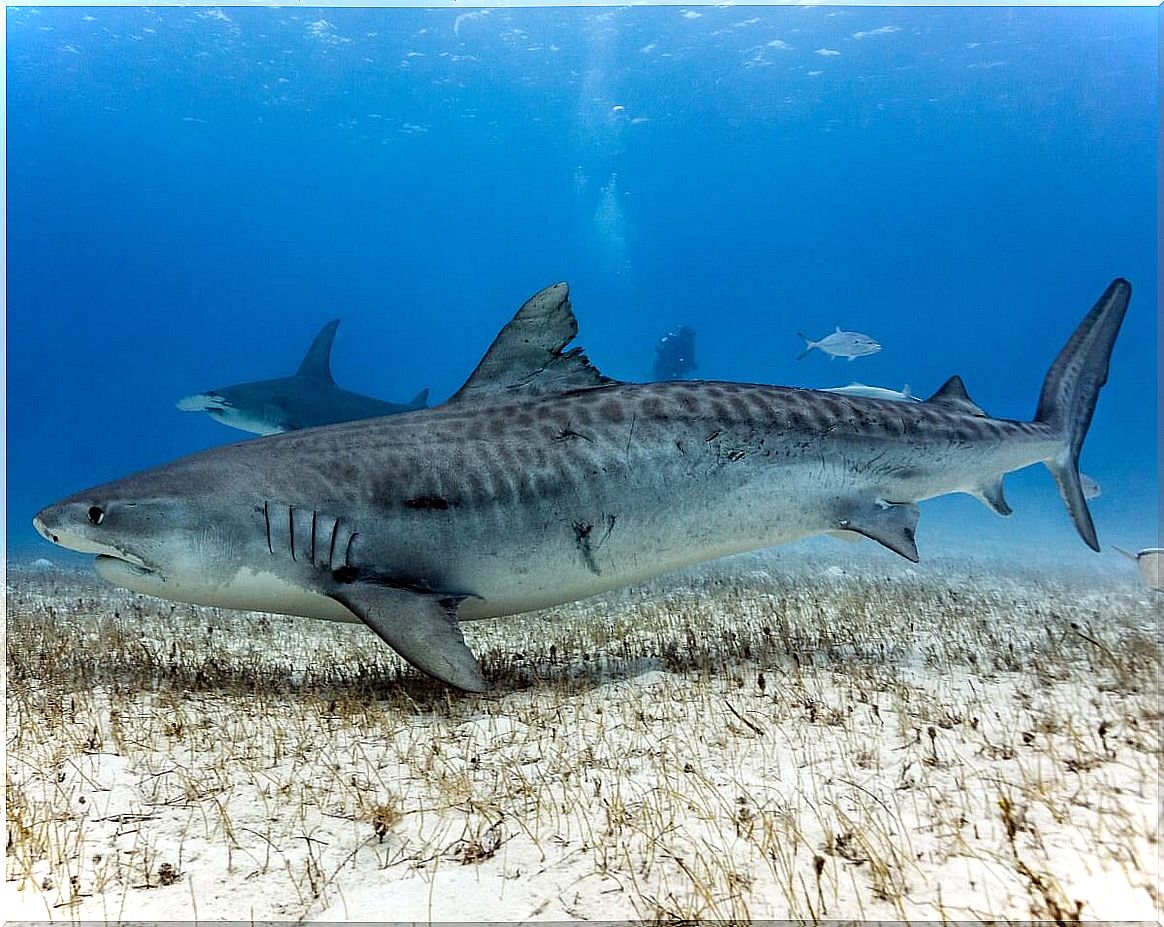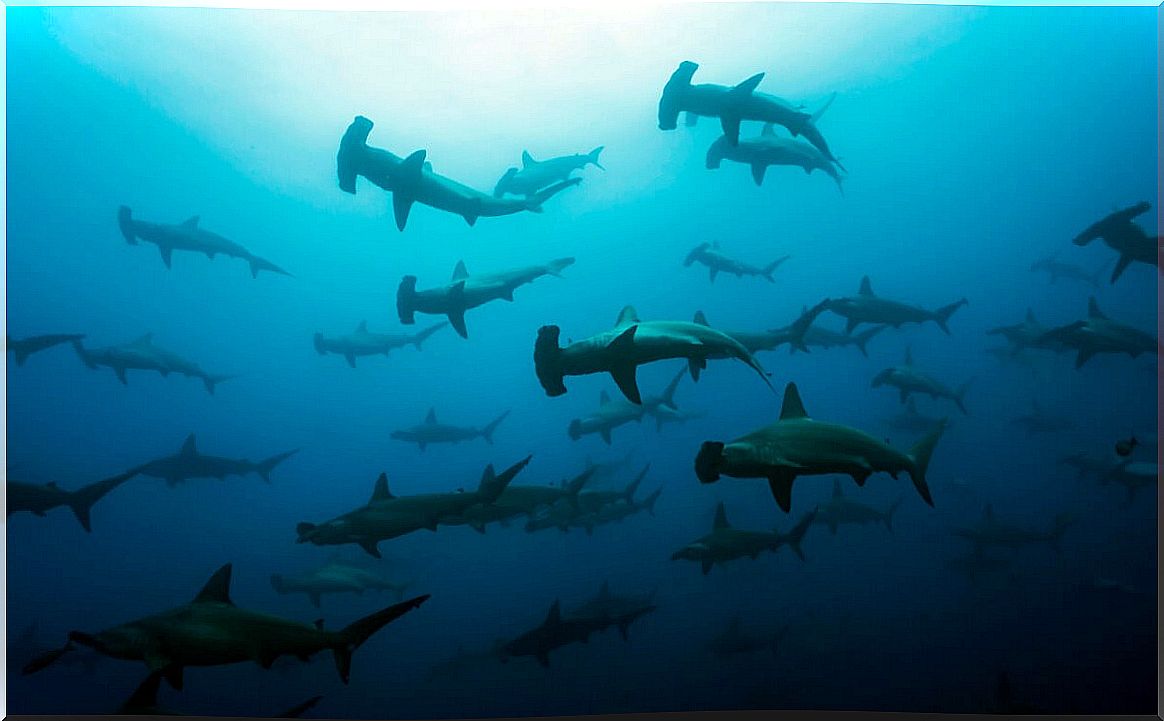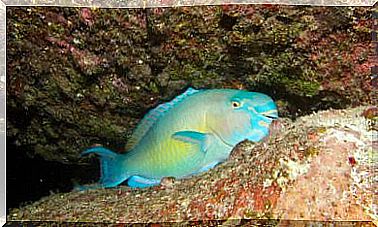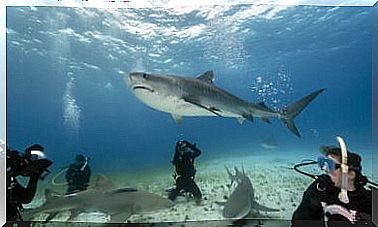Behavior Of Sharks

For most, sharks are synonymous with sudden death or bloody scenes, and have even inspired horror movies. However, sharks’ behavior is far from threatening if they are not disturbed and their environment is respected.
The best way to lose your fear of these animals is to get to know them more thoroughly, which in turn leads to recognizing the value they have for marine ecosystems. Therefore, below you have a compilation of the basic knowledge to reveal its true nature. Surely after reading these lines you see sharks with better eyes.
Shark characteristics
Sharks belong to the class of Chondrichthyes and to the order of Elasmobranchs, groups in which cartilaginous fish are found. They are evolutionarily older animals, whose skeleton is made up of cartilage instead of bone. This gives them greater elasticity and strength, without adding body weight.
Its body is normally cylindrical and hydrodynamic thanks to the small – almost invisible – scales that cover its body. On the other hand, these fish lack a swim bladder, but they make up for it with a large liver full of low-density oils that provides them with the necessary buoyancy.
Currently, 368 species of sharks are known, whose weight and size vary greatly from one species to another. Their average life expectancy is about 25 years, although some taxa are characterized by living longer than others. Without going any further, the Greenland shark ( Somniosus microcephalus ) lives an average of 272 years.

Sharks inhabit all the world’s oceans. In general, they prefer cold waters in the open sea, since when they approach the coasts it is because they become disoriented. They do not usually live in very deep waters, so their prey tend to live closer to the surface. However, the great variability of species that exist creates exceptions to all these statements.
On the other hand, it should be noted that in general they are ovoviviparous animals. Fertilization occurs inside the female and she will carry the eggs until they hatch and give birth to the young. There are also viviparous and oviparous species.
Sharks are strict carnivores and hunt smaller prey than themselves — mainly other fish and cephalopods — but they can occasionally bite larger animals and tear off chunks of meat. Its sense of sight is extraordinary, as is its taste, specialized in detecting the body fat of its prey.
Sharks character
As sharks’ behavior becomes better known, the idea that the personality is exclusive to beings with superior intelligence is gradually dismantled. Sharks are no exception, as in captivity they have shown personal preferences for food and even caretakers.
Their temperament also varies from one specimen to another, so some sharks are more territorial, aggressive, or sociable than others. A Port Jackson study revealed that there were individual differences in stressful situations and in measures of fearlessness in the face of the unknown.
Shark communication
A shark bites its teeth during 3 activities: eating, exploring, or defending itself. If he is hungry and discovers a new object, for example, he will bite it to try it, but if he does not like it he will leave. It’s easy to mistake an identification bite for aggression.
Sharks also use body or tail strikes for this same purpose. Sometimes, they hit the prey to stun it before catching it with their teeth, since in this way they prevent possible aggressions back. Hunting an octopus, for example, is not an easy task for anyone.
In times of mating, behaviors of aggression and submission can be observed, in which body size plays a fundamental role. Normally, the bearing of the male influences his reproductive success, as he holds the female with his teeth during copulation and must be able to control her.
Body language in shark behavior
Although they do not live in groups, evidence has been found that the behavior of sharks includes behaviors to communicate with their peers when they are in the same place. The most important are the following:
- Swimming in circles: This is a terrain reconnaissance behavior. In this way, the sharks mark territory and identify other sharks that are in the area.
- Tail Bumps: In addition to stunning prey, it is also thought to be a way to claim a piece of food when other predators are nearby.
- Exhibit: When 2 sharks of similar size meet, they swim together to calculate which of them is bigger. In this way, hierarchy is established between them.
- Give way: if the difference in size is very evident, the smallest will usually change direction to avoid the larger sharks.
- Hunching the body: This behavior is observed when sharks feel threatened or endangered. It is usually the signal that precedes an attack or flight.
- Aerial lift: surely you recognize the famous image of a shark emerging from the water with its mouth open. It is thought to be an act of frustration after a failed attempt to capture prey.
Shark behavior
They are solitary animals that must be independent from birth, since they do not perform parental care. The behavior of sharks is not too gregarious, except in times of mating and in places where food is abundant. They can be territorial when it comes to prey.
Sharks are generally gentle animals that swim in search of food. They rarely attack if not out of hunger or self-defense. However, their mouth is the only thing they have to explore, so curiosity bites are sometimes misinterpreted as gratuitous aggression.
Can you train a shark?
There is a popular belief that animals considered unintelligent cannot be trained. However, in places where they keep sharks in captivity, a minimum of handling is necessary to maintain their health, so training is started for them.
So far, the process that is being carried out the most with them is desensitization, which allows caregivers and veterinarians to approach you without causing them stress – and avoiding dangers. Through positive reinforcement and lots of patience, sharks are being made to feel calm with humans around them.
Sharks as pest controllers
The lionfish ( Pterois volitans) is an invasive species that is seriously affecting the coral reefs of the Indo-Pacific as it is a very large predator that reproduces at a very high rate. It is also a danger for bathers and fishermen, as its poison is capable of killing an adult.
To control it, a group of environmentalists trained gray sharks (Carcharhinus amblyrhynchos) in the Roatan marine park to show a preference for lionfish. Later, they released them on the reefs that were in danger, thus reducing the population of these invaders.

The power of sharks as population controllers is undeniable today. They are the living image that predators, although dangerous to humans, play an irreplaceable role in the balance of ecosystems. They may not be as friendly as other animals, but their right to life is out of the question.









